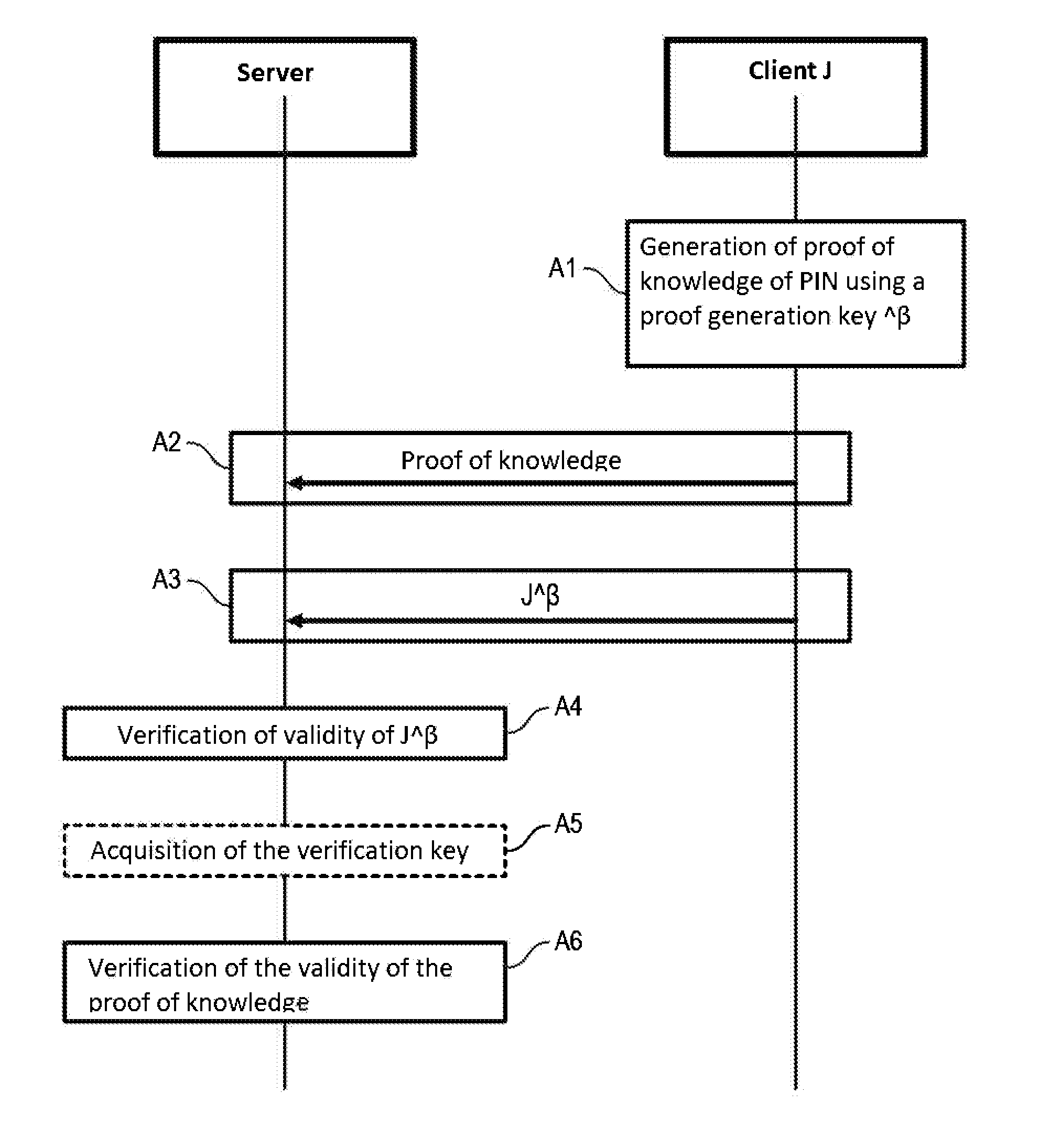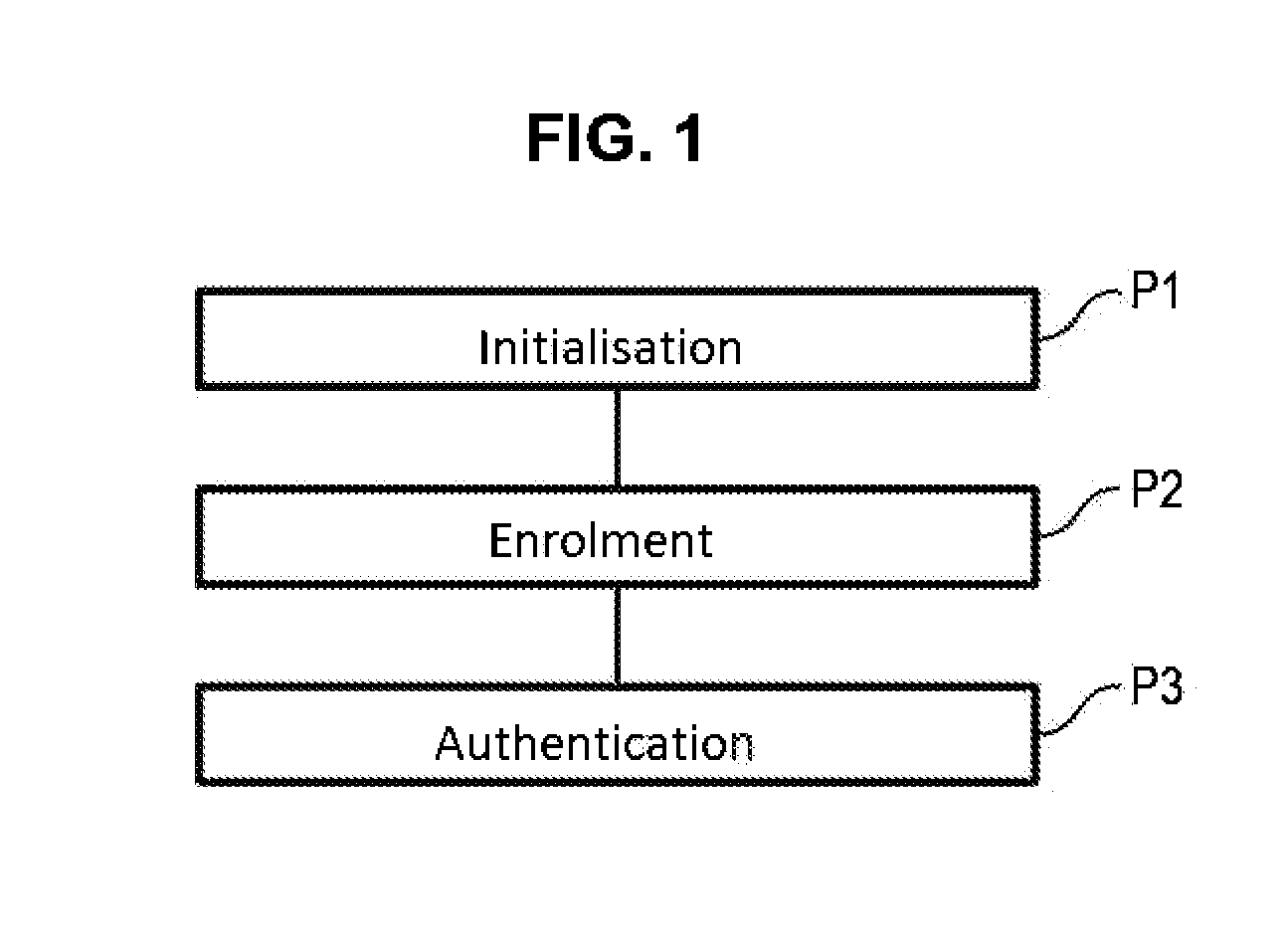Method for Authenticating a Client Device to a Server Using a Secret Element
a technology of secret elements and authentication methods, applied in the field of authentication of clients to servers, can solve the problems of limiting the risk of replay attacks, not impossible, and affecting the security of client devices, so as to achieve the effect of limiting the risks of replay attacks
- Summary
- Abstract
- Description
- Claims
- Application Information
AI Technical Summary
Benefits of technology
Problems solved by technology
Method used
Image
Examples
first embodiment
[0122] for generating the authentication token, the authentication token J can comprise an encryption token C acquired by encryption based on said secret element PIN using a pseudo-homomorphic encryption function Enc. It can further comprise a signature token S corresponding to the result of the signature of the encryption token C using a pseudo-homomorphic signature function Sign.
[0123]Initialisation Phase
[0124]More precisely, during a preliminary initialisation phase, the server can begin by generating the keys required by the encryption and signature functions, the latter capable of being asymmetric functions.
[0125]With reference to FIG. 3, during a first key generation step E1, the server can generate a pair of asymmetric signature keys (pkSign, skSign) dedicated to the implementation of the pseudo-homomorphic signature algorithm Sign. Such a signature algorithm can be a multiplicatively homomorphic algorithm such as the Gennaro algorithm according to the following reference: Ro...
second embodiment
[0147] represented in FIG. 5, the enrolment of the client device takes place with a trusted enrolment server capable of becoming aware of the secret element chosen by the client. The secret element determination step E4 therefore comprises the selection of the secret element by a client in possession of the client device and the transmission of the selected secret element to the server, in a masked or encrypted form, and the encryption token generation step E5 and signature token generation step E6 comprise the generation of the encryption token and the signature token by the server and the transmission of these tokens to the client device.
[0148]More precisely, the encryption token generation step E5 can comprise a first hash value calculation step E51 and a first encryption step E52 similar to those described hereinabove in the first embodiment, however which are implemented by the enrolment server. Alternatively, during the first encryption step E52, the encryption token generated...
third embodiment
[0150]In a third embodiment illustrated in FIG. 6, the encryption token generation step E5 can comprise the generation, by the server, of a temporary secret element, the generation of a temporary encryption token based on the temporary secret element, the transmission of the temporary secret element and the temporary encryption token to the client device and the generation, by the client device, of an encryption token based on the temporary encryption token, the temporary secret element and the secret element (PIN) chosen by the client during the secret element determination step E4. Moreover, the signature token generation step E6 can comprise the generation, by the server, of a temporary signature token by signing the temporary encryption token, the transmission of the temporary signature token to the client device, and the generation, by the client device, of a signature token based on the temporary signature token, the temporary secret element and the secret element (PIN). The c...
PUM
 Login to View More
Login to View More Abstract
Description
Claims
Application Information
 Login to View More
Login to View More - R&D
- Intellectual Property
- Life Sciences
- Materials
- Tech Scout
- Unparalleled Data Quality
- Higher Quality Content
- 60% Fewer Hallucinations
Browse by: Latest US Patents, China's latest patents, Technical Efficacy Thesaurus, Application Domain, Technology Topic, Popular Technical Reports.
© 2025 PatSnap. All rights reserved.Legal|Privacy policy|Modern Slavery Act Transparency Statement|Sitemap|About US| Contact US: help@patsnap.com



